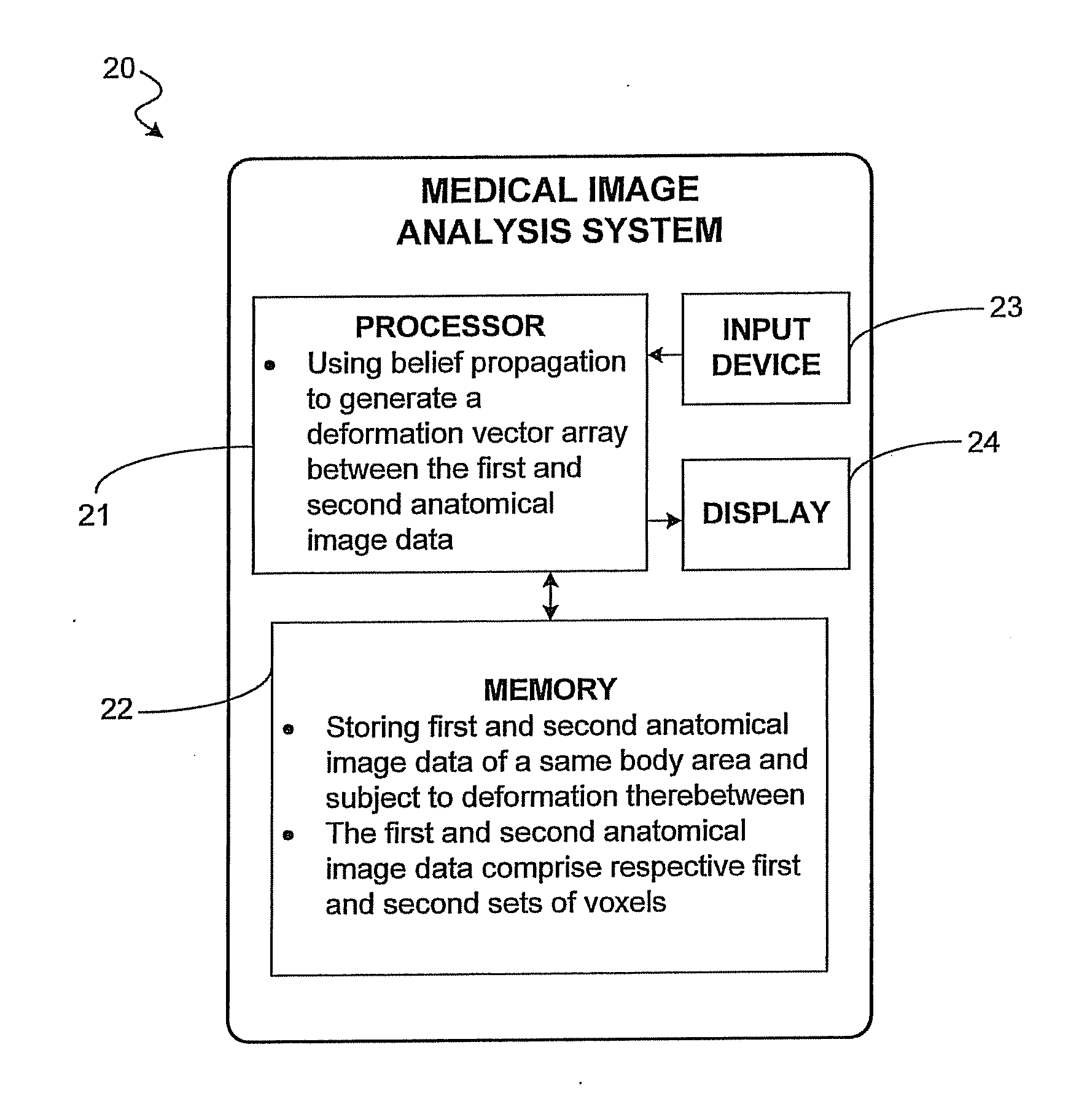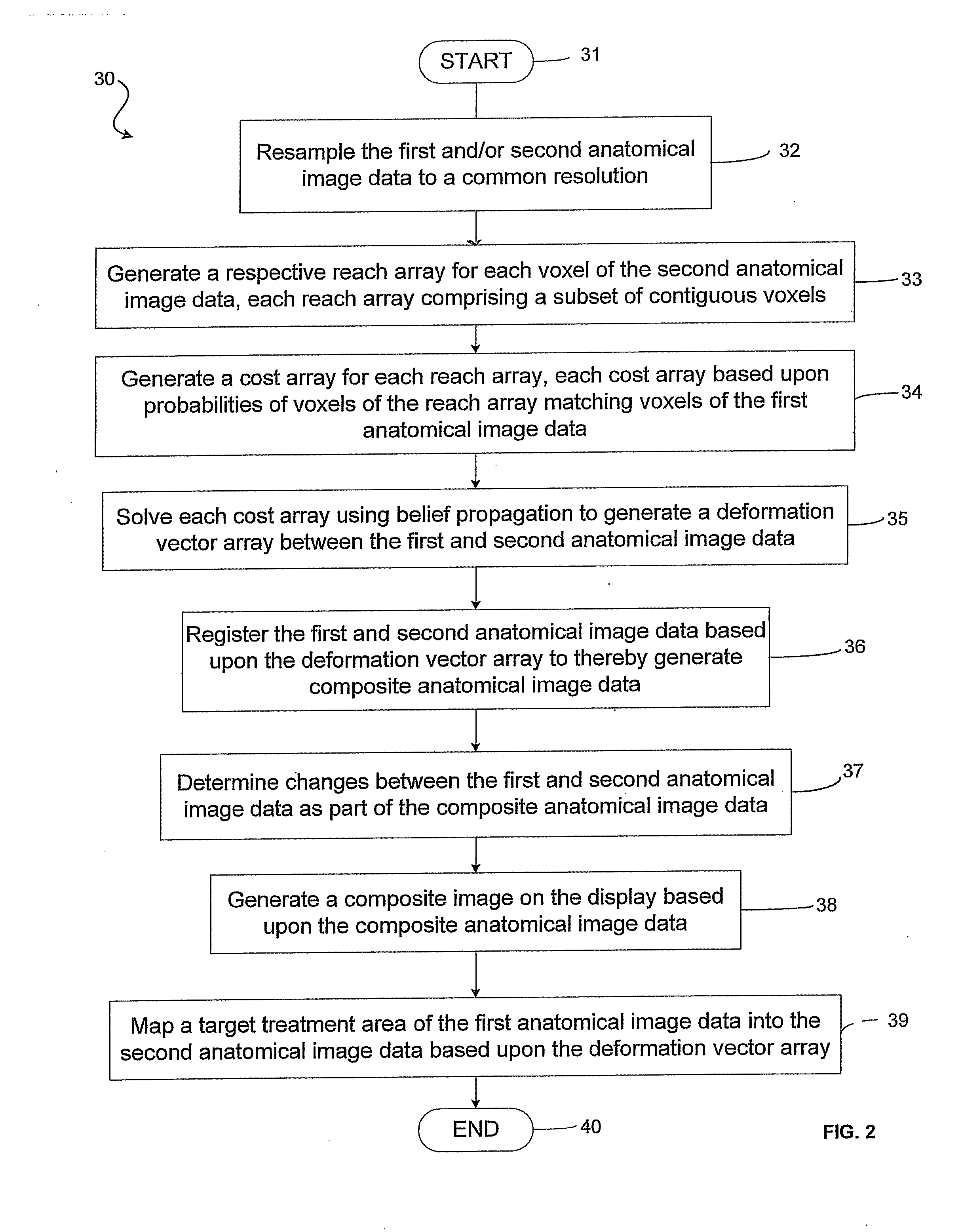Medical image analysis system using n-way belief propagation for anatomical images subject to deformation and related methods
a medical image and anatomical image technology, applied in image analysis, image enhancement, instruments, etc., can solve the problems of comparatively less computing resources, and achieve the effect of accurately determining the deformation between
- Summary
- Abstract
- Description
- Claims
- Application Information
AI Technical Summary
Benefits of technology
Problems solved by technology
Method used
Image
Examples
Embodiment Construction
[0044]The present invention will now be described more fully hereinafter with reference to the accompanying drawings, in which preferred embodiments of the invention are shown. This invention may, however, be embodied in many different forms and should not be construed as limited to the embodiments set forth herein. Rather, these embodiments are provided so that this disclosure will be thorough and complete, and will fully convey the scope of the invention to those skilled in the art. Like numbers refer to like elements throughout.
[0045]Referring initially to FIG. 1, a medical image analysis system 20 is now described. The medical image analysis system 20 includes a processor 21. A memory 22, an input device 23, and a display 24 are coupled to the processor. The processor 21, memory 22, and display 24 may be any suitable devices known to those of skill in the art. The input device 23 may be a keyboard, mouse, or trackball, for example.
[0046]The memory 22 stores first and second anat...
PUM
 Login to View More
Login to View More Abstract
Description
Claims
Application Information
 Login to View More
Login to View More - R&D
- Intellectual Property
- Life Sciences
- Materials
- Tech Scout
- Unparalleled Data Quality
- Higher Quality Content
- 60% Fewer Hallucinations
Browse by: Latest US Patents, China's latest patents, Technical Efficacy Thesaurus, Application Domain, Technology Topic, Popular Technical Reports.
© 2025 PatSnap. All rights reserved.Legal|Privacy policy|Modern Slavery Act Transparency Statement|Sitemap|About US| Contact US: help@patsnap.com



